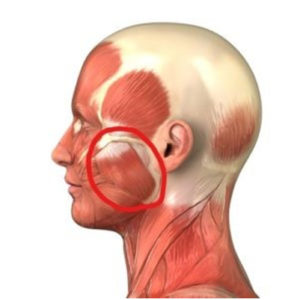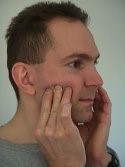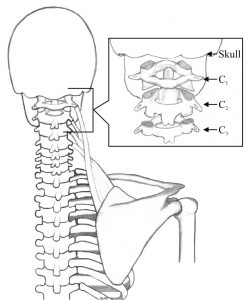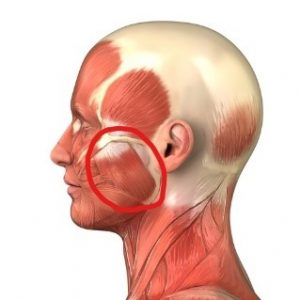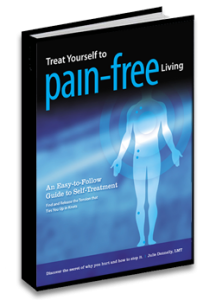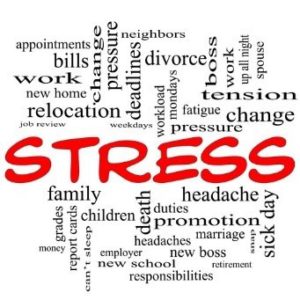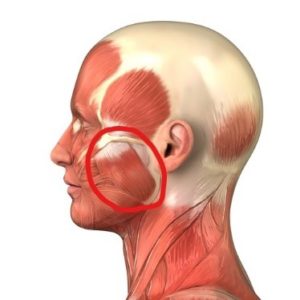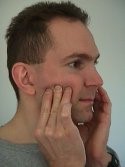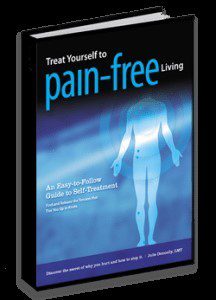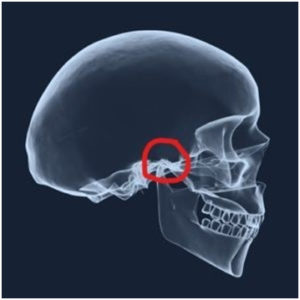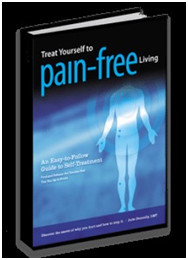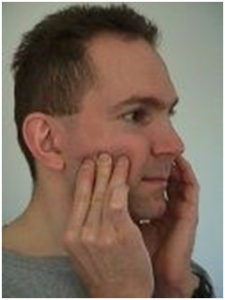Treating Your Digastric Muscle
Author: Julie Donnelly, LMT – The Pain Relief Expert
Editor: Dr. Steve Chaney
 How wonderful, it’s May! I especially love May when I’m up north and the flowers are all blooming, the air feels fresh, and people come out to enjoy the lovely weather.
How wonderful, it’s May! I especially love May when I’m up north and the flowers are all blooming, the air feels fresh, and people come out to enjoy the lovely weather.
Here in Florida, it’s just starting to get hot. Most of our “snowbird” friends have left, although the traffic still seems heavy. I think a lot of people have moved here, or they are just staying longer than normal. So far, the humidity isn’t too bad. I’m pretending that it will stay that way. LOL
I’m Changing My Newsletter
I’ve been writing this newsletter for around 10 years. It’s time for a change.
 On Friday, April 30th, my dear friend Sherri, a fantastic photographer and videographer, came over to the office, and along with four models (Frankie, Barbara, Rachel, and Thomas) we filmed 50 short self-treatment videos for my YouTube channel. Pat, my webmaster, will format them and put them up on YouTube, and then one by one I will add the videos to my future newsletters.
On Friday, April 30th, my dear friend Sherri, a fantastic photographer and videographer, came over to the office, and along with four models (Frankie, Barbara, Rachel, and Thomas) we filmed 50 short self-treatment videos for my YouTube channel. Pat, my webmaster, will format them and put them up on YouTube, and then one by one I will add the videos to my future newsletters.
My plan is to still write the explanation of the muscle and why it causes pain, so you’ll have all the background info you want. Then there will be a link to the video so you can do the self-treatment along with the model.
You’ll also be able to subscribe to my YouTube channel and see other self-treatments, so you won’t have to wait for a newsletter on the topic if you have an ache or pain that you want to resolve.
This month is the first newsletter to be done this way. I hope you like it.
A Muscle That Mimics TMJ Pain
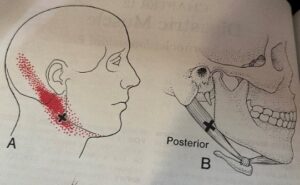 We’ve discussed TMJ in previous newsletters, and now that I’m switching the pictures for videos, we’ll be talking about it again in the near future. The muscle we’re looking at this month causes pain in the same area of your jaw, but it doesn’t really affect the jaw at all.
We’ve discussed TMJ in previous newsletters, and now that I’m switching the pictures for videos, we’ll be talking about it again in the near future. The muscle we’re looking at this month causes pain in the same area of your jaw, but it doesn’t really affect the jaw at all.
The name of the muscle is Digastric Muscle.
The posterior digastric muscle is right under your ear, as shown in this graphic to the left.
It originates from the mastoid bone which is the bone behind your ear. And it inserts into the bottom of your chin.
When the digastric muscle contracts you open your mouth to chew, speak, sing, or yawn. Obviously, this is an important muscle.
Treating Your Digastric Muscle
The self-treatment is simple. Click Here to watch how to easily eliminate this ache.
You Can Also Find All The Solutions In One Easy-To-Read Book
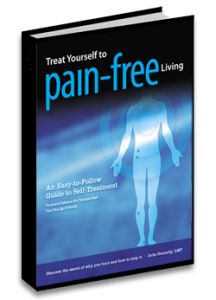 Treat Yourself to Pain-Free Living The Comprehensive Guide to Relieving Chronic Pain
Treat Yourself to Pain-Free Living The Comprehensive Guide to Relieving Chronic Pain
This book provides a complete introduction to the Julstro Method, along with easy-to-follow self-treatment techniques to help you live a pain-free life.
Key highlights include:
- It reveals the root causes of chronic muscle and joint pain, including trigger points.
- It teaches the Julstro Method, a proven approach for self-treating a wide range of pain conditions.
- It is fully illustrated with step-by-step instructions to relieve pain in different areas of the body.
- It offers a drug-free, cost-effective solution for pain stemming from sports, work, or other repetitive activities Whether you struggle with persistent aches, numbness, or mobility issues, this book empowers you to take control of your health and find lasting relief. Discover how to revitalize your body and reclaim your active, pain-free lifestyle.
Wishing you well,
Julie Donnelly
www.FlexibleAthlete.com
These statements have not been evaluated by the Food and Drug Administration. This information is not intended to diagnose, treat, cure, or prevent any disease.
About The Author
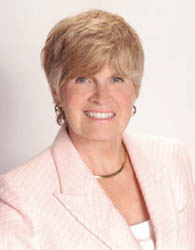 Julie Donnelly has been a licensed massage therapist since 1989, specializing in the treatment of chronic pain and sports injuries. The author of several books including Treat Yourself to Pain-Free Living, The Pain-Free Athlete, and The 15 Minute Back Pain Solution.
Julie Donnelly has been a licensed massage therapist since 1989, specializing in the treatment of chronic pain and sports injuries. The author of several books including Treat Yourself to Pain-Free Living, The Pain-Free Athlete, and The 15 Minute Back Pain Solution.
Julie has also developed a proven self-treatment program for the symptoms of carpal tunnel syndrome.
She has a therapy practice in Sarasota, Florida, and she travels around the USA to teach massage and physical therapists how to do the Julstro Method, and she also teaches self-treatment clinics to anyone interested in taking charge of their own health and flexibility.
She may be reached at her office: 919-886-1861, or through her website: www.FlexibleAthlete.com
About The Editor
 Dr. Chaney has a BS in Chemistry from Duke University and a PhD in Biochemistry from UCLA. He is Professor Emeritus from the University of North Carolina where he taught biochemistry and nutrition to medical and dental students for 40 years.
Dr. Chaney has a BS in Chemistry from Duke University and a PhD in Biochemistry from UCLA. He is Professor Emeritus from the University of North Carolina where he taught biochemistry and nutrition to medical and dental students for 40 years.
Dr. Chaney won numerous teaching awards at UNC, including the Academy of Educators “Excellence in Teaching Lifetime Achievement Award”. Dr Chaney also ran an active cancer research program at UNC and published over 100 scientific articles and reviews in peer-reviewed scientific journals. In addition, he authored two chapters on nutrition in one of the leading biochemistry text books for medical students.
Since retiring from the University of North Carolina, he has been writing a weekly health blog called “Health Tips From the Professor”. He has also written two best-selling books, “Slaying the Food Myths” and “Slaying the Supplement Myths”. And most recently he has created an online lifestyle change course, “Create Your Personal Health Zone”. For more information visit https://chaneyhealth.com.
For the past 45 years Dr. Chaney and his wife Suzanne have been helping people improve their health holistically through a combination of good diet, exercise, weight control and appropriate supplementation.



